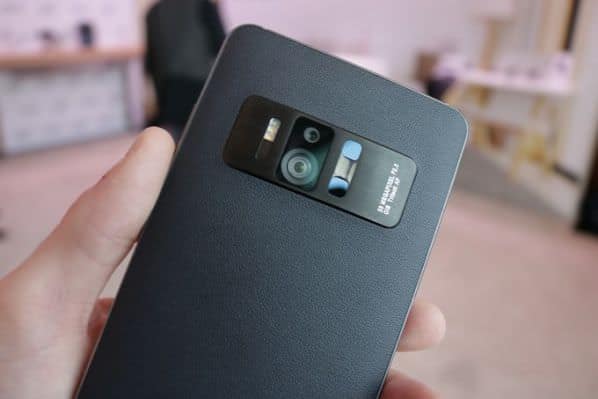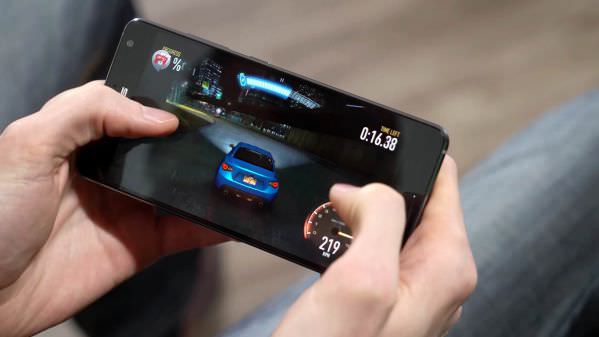Asus ZenFone AR is the ultimate manifestation of virtual and augmented reality action. Today’s smartphone review will highlight features of the latest ZenFone’s hybrid machine vision achievement: integrating Google Daydream and Google Tango technology.
Asus ZenFone AR: What’s New?
First ever Google Tango and Daydream Smartphone
Let’s start with the best! Virtual Reality is now a day everywhere and Daydream is the cheapest solution for the average smartphone user. However, augmented reality is also running in parallel and although it is behind the successes of its VR-counterpart in terms of support, availability, and development… the perks are irresistible.
ALSO CHECK OUT: THE INTERACTION OF PROJECT TANGO WITH OTHER CUTTING-EDGE TECHNOLOGIE
ZenFone AR rules because until now we had never seen the use of AR and VR technology on the same smartphone. Asus has intelligently put the virtual smarts together, putting a combined solution for the smartphone buyers who which a piece of both machine vision technologies on the same portable device. Google Tango so far is the only AR smartphone technology in production and distribution.
Simply put, if you are looking for Asus ZenFone alternate, you will have to buy both Lenovo Phab 2 and Google Pixel. That’s going to cost you a fortune and cast you the inherent awkwardness of keeping two huge smartphones on you. But hey, it is an alternate you can think about.
Also keep in mind that there may not be many Android apps to demo the Tango features because of very limited number of smartphones offering it. Daydream VR apps, on the other hand, have already become popularity due to the tech giant’s first #MadeByBoogle Pixel phone.
Asus ZenFone AR: Bold Specs
Other than the huge benefit of its Tango and Daydream support,
- Snapdragon 821 processor, 8GB RAM
- 23-megapixel photographic camera
- Daydream VR-ready, Google Tango-enabled
- TriCam system to facilitate accessory Tango cameras
- Lightweight: 170g
- Super AMOLED screen with 2k Resolution (1440×2560) display
- USB-C charging
- Android 7.0 Google Nougat
Asus ZenFone AR: Features
As to its Tango features, the Asus has surely managed to point out and address the flaws in Lenovo’s design. For example, the Phab 2’s vertical arrangement of its accessory cameras prevented the smartphone users from holding it comfortably so their fingers won’t get in the way of all the proximity sensor or cameras. Which is important if you wish to use Tango features.
Huge Firepower
Running Google Tango and Daydream features on the same system is not a joke, it takes the best. ZenFone AR has the best hardware to cope, featuring Snapdragon 821 processor and 8 gigabytes of RAM to stay strong in the processing of its machine vision features. Oh, I missed something that has only happened in 2017 and I repeat, 8GB RAM!!
Battery and Storage
A 3300mAh battery drags it all day long and USB-C port for faster charging. Check this out, if ZenFone AR’s built-in 256GB is not enough for you, you can increase your storage with up to 2TB MicroSD card.
ZenFone AR Weight
Weight definitely matters for all Daydream-enabled phones or VR-supported phones for that matter because heavy phones wreck your neck when you put them and wear them on your smartphone-based VR Headset. The all-new Asus ZenFone AR weighs just 170 grams! That’s awesome because in comparison Apple iPhone 7 Plus tips the balance at 188g. It is even lighter than Lenovo Phab 2!
Photographic Camera
A 23MP camera gives Zenfone AR its incredible photo and video capturing capabilities. It is able to work in almost all the lightening conditions… a trait that future smartphones have to pick. The autofocus function has been fine-tuned to an accuracy of 0.03 seconds, so doesn’t matter how fast you push the capture button, you won’t see a blur whether face or scene mode.
Asus knows how to be thrifty with cameras. Using the principles of panoramic captures, the latest smartphone offers you a 92-megapixel photo using the panoramic capabilities of the 23-megapixel camera. This additional feature may not work on the crowd but it is a nice treat for travelers and professionals who love nature and still photography. Moreover, you get RAW imagery, 4k video recording, and 4-axis OIS for perfect orientation.
Asus ZenFone AR: Design and Display
A single centralized panel towards the top on the backside of the phone is a win-win for everyone. The horizontal arrangement of cameras that Asus has labeled TriCam System solves the finger overlap problem that prevented the Phab 2’s accessory cameras for Google Tango from capturing the environment. Likewise, the placement of fingerprint sensor, overlapping the physical home button also delivers great convenience.
Every new phone these days has to go through a tough decision about headphone jacks because as Apple decided to kill them with iPhone 7, the future of headphone jacks may not be safe because iPhones have always been trendsetters. That’s why along with USB-C, ZenFone AR also retains the headphone jack.
ALSO CHECK OUT: A LOOK AT THE BEST OF CES 2017
The size of the Zenfone AR at 5.7 inches also beats the previous Tango player, the 6.4-inch Phab 2. That’s not all, the Daydream-ready ZenFone AR also boasts Super AMOLED screen with a resolution of 1440×2560 and 2K display.
There are three types of cameras on this so-called TriCam. A video/photo capturing camera you are all familiar with. Then there are the depth sensing and motion tracking cameras used by Tango technology for indoor navigation and placement of an augmented object in the real world.
Asus ZenFone AR Review: Summary
Wow! Here’s what I have to say. It’s a flagship smartphone in terms of camera quality, hybridization of VR and VR technology, and its smartness. To clarify, the word flagship should only be used when previous standards are broken and challenged by the better standards. Our Asus ZenFone AR review discovered it is just that!




